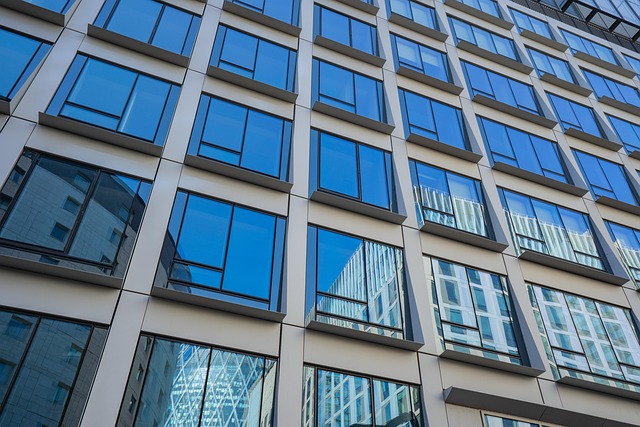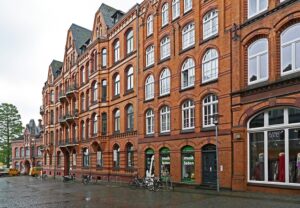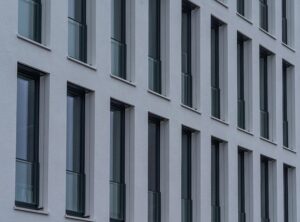Destratification fans are specialized devices designed to address thermal stratification in HVAC systems by mixing horizontal air and redistributing warmer air near ceilings back down to occupied areas, offering enhanced temperature control and improving efficiency, leading to significant energy savings in industrial cooling applications and commercial spaces. Their strategic design, key components, and advanced air mixing technology disrupt thermal stratification, promote uniform distribution, and improve energy efficiency across various sectors, from industrial cooling to office, school, and hospital settings.
Discover the power of high-velocity destratification fans—a game-changer in seamless air blending. This article explores their unique ability to revolutionize industries by efficiently mixing atmospheric layers, enhancing environmental control, and improving overall productivity. By delving into the key components and design considerations, we uncover how these fans ensure optimal performance. From bustling industrial settings to vibrant urban landscapes, destratification fans are a testament to technological advancement, offering versatile benefits tailored to diverse applications.
- Understanding Destratification Fans and Their Functionality
- Key Components and Design Considerations for Seamless Air Blending
- Applications and Benefits of High-Velocity Fans in Various Industries
Understanding Destratification Fans and Their Functionality

Destratification fans are specialized devices designed to tackle a unique challenge in HVAC (Heating, Ventilation, and Air Conditioning) systems: thermal stratification. As air is heated or cooled, it tends to rise, creating layers of warm and cool air separated by temperature gradients. This phenomenon, known as thermal stratification, can significantly impact indoor comfort and energy efficiency. Destratification fans combat this issue by promoting horizontal air mixing, ensuring a uniform distribution of warm or cool air throughout the space.
These fans function by drawing in air from multiple points and pushing it upwards, where it mixes with the stratified layers. This process effectively redistributes the warmer air near the ceiling back down into the occupied zones, providing more consistent temperature control. By promoting efficient air circulation and mixing, destratification fans can enhance HVAC efficiency, resulting in substantial energy savings. Whether in industrial cooling applications or commercial spaces, ceiling-mounted destratification fans offer a cost-effective solution for improving indoor environments through advanced air mixing technology.
Key Components and Design Considerations for Seamless Air Blending

The design and key components of high-velocity destratification fans play a pivotal role in achieving seamless air blending and optimizing HVAC efficiency. These fans are strategically engineered to disrupt thermal stratification, ensuring warm air redistribution throughout spaces, be it industrial cooling applications or commercial settings.
Key considerations include the use of ceiling-mounted fans with advanced air mixing technology, capable of generating powerful yet precise air currents. This ensures effective circulation while minimizing energy savings. Temperature control mechanisms and variable speed drives are integral to regulating airflow rates according to environmental demands, enhancing overall HVAC performance. Such sophisticated design elements contribute to creating comfortable indoor environments by breaking up stagnant air layers, promoting uniform air distribution, and ultimately improving energy efficiency in various sectors.
Applications and Benefits of High-Velocity Fans in Various Industries

High-velocity destratification fans play a pivotal role in various industries by addressing the challenges posed by thermal stratification. These fans are designed to blend air layers seamlessly, enhancing air circulation and temperature control. In industrial cooling scenarios, they significantly improve HVAC efficiency, leading to substantial energy savings. This is particularly beneficial in large commercial spaces where maintaining uniform warmth or coolness can be a daunting task.
The applications of these fans extend beyond industrial settings. In offices, schools, and hospitals, ceiling-mounted destratification fans contribute to improved air mixing technology, ensuring that every corner receives adequate ventilation. By redistributing warm air and promoting better air circulation, they create more comfortable environments. This not only enhances employee productivity in commercial applications but also promotes better health and well-being in institutions like schools and healthcare facilities, where temperature control is critical.
High-velocity destratification fans, with their ability to seamlessly blend air layers, offer a multitude of benefits across various industries. By understanding the key components and design considerations, we can harness their full potential for efficient and effective air circulation. Whether in manufacturing, healthcare, or data centers, these fans continue to prove themselves as indispensable tools, ensuring optimal environmental control and enhancing overall operational efficiency.













